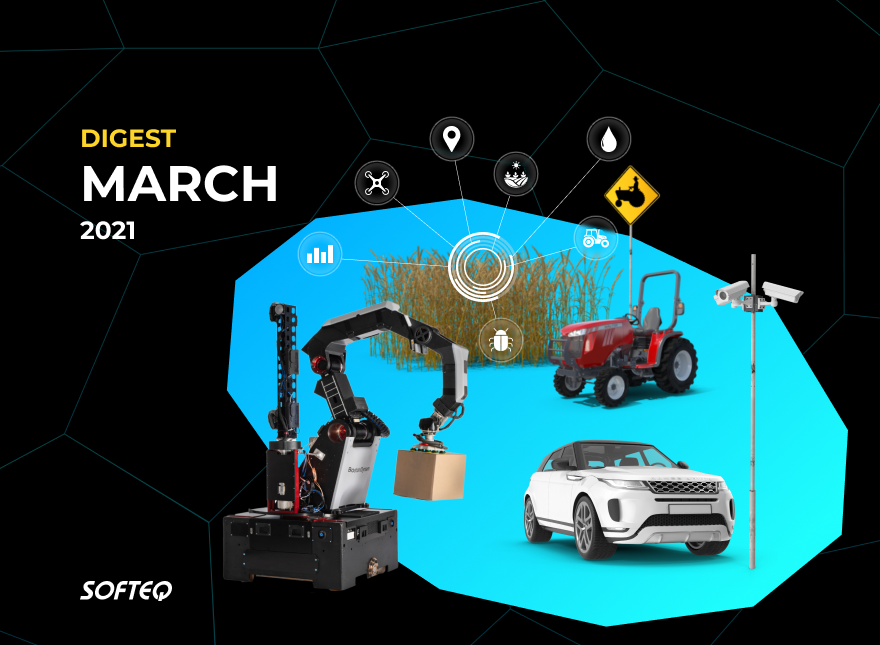This is What Techies Talked About in March

In this issue of the Tech Digest: AI helps streamline farming processes and optimize agricultural operations; a contactless IoT station detects COVID-19 carriers and verifies visitors’ safety; computer vision controls e-commerce traffic and monitors public spaces. All that and more in a 10-minute read.
Carrying farms into the future with AI and robotics
Farming has always been slow to adopt new technologies. Finding enough labor to get the job done and keep workers safe is a constant struggle. Now, it’s time for the industry to take a break to reconsider its approaches.
To meet these challenges, one U.S. company introduced Carry—an autonomous vehicle that helps streamline the harvesting process. The robot can transport up to 500 pounds of crops on all terrains and in all weather—increasing productivity by up to 30% to pay for itself in as few as 80 days. Learn how this agricultural robotic harvest companion helps optimize farms.
Going where the work is: How one robot helps automate warehouses
Robots are no longer nice-to-have accessories for modern warehouses. More and more manufacturers are leveraging robotic automation for a wider number of applications including transporting and handling materials, performing various production tasks, and streamlining warehouse processes.
To help savvy companies stay ahead of the competition, Boston Dynamics, a world leader in mobile robots, has released Stretch, a versatile mobile robot for case handling, truck unloading, and faster pallet building. Learn more about Stretch and get ready for the next step toward warehouse automation.
Keeping COVID-19 out of buildings with one handy health checkpoint
Many businesses are now seriously considering a return to the office buildings they abandoned a year ago. Of course, things still won't be quite the same: safety first.
To allow businesses to return to their operational productivity as cost-effectively and safely as possible, a Florida company, Multimedia Care has recently introduced a contactless, stand-alone station that integrates mask verification, temperature reading, and gel sanitizer dispensing. What else can this health-screening technology do?
Improving quality of life in cities with computer vision technology
In 2019, The New York Times reported that 1.5 million packages were delivered in New York City every single day. This doesn’t even account for the increased demand in 2020 that most likely will remain after the lockdown. Though convenient for customers and profitable for Amazon, sending so many boxes means increasingly severe traffic problems, crowding, parking and safety issues, and polluting emissions.
Fortunately, technology is finally catching up, providing new means of addressing the challenges listed above. Specifically, the computer vision software installed in streetlight cameras has the potential to reinvent the way cities live and move. Learn how computer vision software helps cities manage severe traffic problems, safety issues, and polluting emissions.
Exploring market demand for in-vehicle AR/VR applications in modern digital cars
When it comes to electric vehicles, engine size doesn’t matter anymore. But what does? Many well-established brands like Audi, Mercedes-Benz and Volkswagen already offer a suite of AR and VR features in their top-end vehicles. Does this mean the future is already here?
To be honest, these offerings are mostly for automotive giants and their latest models. As for the real world, is there any market demand for bringing AR and VR to cars, trucks and passenger vans? Let’s see if car companies are changing their product offerings.
